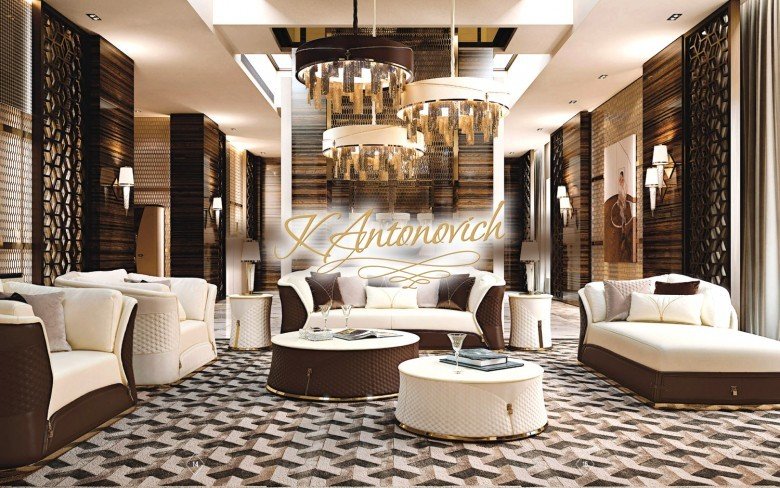Introduction:
By integrating contemporary scientific investigation with conventional knowledge, Liv Pure establishes itself as a unique dietary supplement that challenges established standards of health. To transform one’s life, Liv Pure is positioned as more than a simple investment in wellness. Devoted to the complex relationship between hepatic function and weight management, this one-of-a-kind product has been meticulously crafted. Scientific investigations provide support for its distinctive formulation. We cordially invite you to partake in Liv Pure, an all-encompassing undertaking that integrates cutting-edge scientific findings with traditional wisdom derived from natural components. By combining state-of-the-art scientific principles with time-honored holistic knowledge, Liv Pure provides an unparalleled opportunity to introduce a comprehensive approach to wellness that surpasses the boundaries of conventional health supplements.
What is Liv Pure?
In addition, it promotes weight maintenance and hepatic function. An innovative dietary supplement is Liv Pure. The distinctive combination of organic components found in Liv Pure, substantiated by scientific inquiry, is marketed as more than a mere monetary commitment to well-being. In addition to targeting the underlying factors contributing to weight gain that is correlated with liver disorders, the supplement endeavors to maintain optimal liver function.
Choline, resveratrol, genistein, betaine, berberine, molybdenum, glutathione, and catechin-rich tea leaves are all essential components of Liv Pure. The process of selecting these components was carried out after careful deliberation of the health benefits they offer both collectively and individually. The aforementioned advantages include the potential to promote hepatic function, aid in weight loss, and possess antioxidant characteristics.
Liv Pure operates through two distinct mechanisms: lipolysis, which promotes fat loss and facilitates weight loss; and liver detoxification, which enhances liver function through the augmentation of lipid metabolism and fat loss. Under its lack of potentially harmful components and compounds, the dietary supplement provides users with a safe and natural means of attaining their health goals.
Credibility for the effectiveness of Liv Pure is supported by scientific research and clinical studies that prioritize transparency and honesty. Users are encouraged to evaluate Liv Pure without incurring any financial obligation through the provision of a sixty-day money-back guarantee. This policy showcases the company’s unwavering confidence in the product’s effectiveness and superior quality. In conclusion, Liv Pure provides a medically validated program that accommodates those in search of a safe and natural method to manage their weight while simultaneously preserving liver health.
How does Liv Pure work?
Liv Pure provides an outstanding strategy for weight loss through its substantial focus on liver health, a critical component in regulating exercise. The liver is an essential component of the Liv Pure approach owing to its function in lipid metabolism and the elimination of debris. Liposolysis and liver purification, the two fundamental components that work in tandem to eradicate impurities, improve lipid combustion, and maintain liver health, are in collaboration.
The advantageous effects of Liv Pure on weight loss and liver health are due to its all-natural components, which include milk thistle, turmeric, and artichoke. Furthermore, by facilitating a natural detoxification process, the tablet improves overall health and vitality while concurrently stimulating weight loss.
Ingredients:
Liv Pure supplement is formulated with potent natural ingredients that support hepatic function and weight loss:
- Silymarin, an extract derived from milk thistle that is rich in antioxidants, promotes and maintains hepatic functionality.
- Betaine: This compound, which is found in spinach and beets, facilitates the lipid metabolism of the liver.
- Berberine: Additionally, potential weight loss has been linked to Berberine, a botanical compound recognized for its ability to alter insulin sensitivity.
- Molybdenum is a critical element for enzyme activity, particularly as it pertains to purification processes.
- An amino acid known as glutathione, which is considered the “master antioxidant,” assists in immune system detoxification.
- Tea leaves are rich in catechins, which are vitamins that support hepatic function.
- Berry and red wine are rich in the antioxidant resveratrol, which has the potential to improve cardiac health.
- Genistein, an antioxidant found in soy products, confers benefits to overall health.
- Empirical evidence supports the notion that tea leaves contain chlorogenic acid, a compound that confers positive effects on both the physical and mental health of individuals.
- Choline is essential for the process of lipid decomposition and the proper functioning of the liver.
Money repayment guarantee for sixty days:
In recognition of its customers’ unwavering faith in the efficacy and quality of the product, Liv Pure is delighted to provide a sixty-day money-back guarantee. By providing a significant amount of time for users to fully benefit from Liv Pure, this guarantee enables individuals to initiate their journey toward wellness and health without any possible hazards. Customers are encouraged to express their discontent with Liv Pure within sixty days of completing a purchase or encountering any other problems. The refund process is intentionally streamlined and uncomplicated, with a guarantee of providing a full recompense within forty-eight hours of the return being received. Significantly, Liv Pure demonstrates its commitment to customer satisfaction through the complete disregard for the condition of returned items when determining their eligibility for a refund. With an emphasis on open and honest communication, patrons have the option to commence the return process by contacting the organization via email or the toll-free hotline. The principal goal of Liv Pure is to cultivate a sense of assurance and satisfaction among its clientele during their journey toward self-improvement. Through the provision of a gratifying and risk-free experience, the money-back guarantee exemplifies this commitment.
Benefits:
There are numerous advantages offered by Liv Pure:
- An advantageous characteristic of silymarin and camellia sinensis is their capacity to augment the intrinsic detoxification mechanisms of the liver.
- Promotes fat burning and enhances liver function—The proprietary composition of Liv Pure aids in weight loss, stimulates fat burning, and expedites metabolism.
- The detrimental effects of free radicals are counterbalanced by the protective properties of antioxidants, such as glutathione and resveratrol, which enhance liver function and general health.
- Enhanced vitality Energy is increased through purifying contaminants, fortifying the nervous system, and heightening consciousness with Liv Pure.
- Increased metabolic rate Berberine and chlorophyll stimulate metabolism, which affects weight maintenance and reduction.
- Molybdenum and genistein, constituents of Liv Pure, promote optimal liver function and facilitate nutritional assimilation.
- Resveratrol exhibits a contribution towards the overall development of health through the enhancement of cardiovascular health.
- Liv Pure, a natural vitamin that is both safe and effective, successfully supports liver health and weight loss.
- Deterministic: Liv Pure is a supplement for liver health maintenance and weight loss that has been subjected to exhaustive scientific validation and scrutiny.
- Money-Back Guarantee: To guarantee complete customer satisfaction, Liv Pure provides a risk-free trial and a sixty-day money-back guarantee.
Is Liv Pure safe?
In keeping with its commitment to promoting liver health and natural weight loss, Liv Pure prioritizes safety. To ensure that every natural component of Liv Pure meets rigorous safety standards, its composition undergoes rigorous testing. Safety is ensured by the absence of artificial or hazardous substances in Liv Pure, a dietary supplement. Furthermore, a growing body of research has demonstrated that the inclusion of substances that have undergone extensive investigation, such as betaine, silymarin, and camellia sinensis, has the potential to enhance hepatic function sustainably. Before incorporating any dietary supplement into one’s regimen, the organization emphasizes the criticality of seeking guidance from a healthcare professional, especially for individuals who are pregnant, nursing or have pre-existing medical conditions. Furthermore, by employing a methodical and client-focused strategy, Liv Pure ensures that its users can effortlessly integrate the product into their daily routines without compromising their safety, while also promoting natural weight loss and intestinal health.
Supported by Scientific Evidence:
The slogan “Science supported” emphasizes the foundation of Liv Pure on clinical validation and research supported by evidence. Alongside resveratrol, berberine, and silymarin, which have been empirically proven to promote weight loss and enhance liver function, Liv Pure is characterized by its incorporation of an extensive variety of components. By explicitly acknowledging research data and findings, the company bolsters Liv Pure’s reputation as a health strategy supported by scientific evidence and demonstrates its unwavering commitment to transparency.
Both the constituent selection and the overall effectiveness of Liv Pure products are substantiated by scientific evidence. Scientific investigations into the impact of Liv Pure on critical health metrics such as liver function, metabolism, and detoxification enhance the nutritional supplement’s credibility. Additionally, Liv Pure strengthens consumer confidence and showcases its commitment to scientific integrity through its provision of unimpeded access to research information for individuals seeking evidence-based remedies for their health and general well-being.
The credibility of Liv Pure is enhanced by its steadfast commitment to participate in clinical trials and openly disclose the outcomes. This approach aligns with the ongoing evolution of the dietary supplement sector, wherein consumers are placing greater emphasis on products that are substantiated by scientific research. Liv Pure is regarded as a reliable and credible option for those in search of a scientifically rigorously investigated approach to weight loss and liver health, due to its steadfast dedication to scientific integrity.
FAQs:
- When energy levels are elevated, what purpose does Liv Pure fulfill?
To enhance vitality, Liv Pure facilitates natural detoxification and eliminates contaminants. Enhanced levels of cognizance and vitality result from the interaction of naturally occurring compounds that have no detrimental side effects.
- How should I commence the procedure for returning a refund?
Establishing communication with the company through its toll-free number or email will commence the return process. The organization guarantees a full reimbursement, irrespective of the condition of the items, within forty-eight hours of their arrival.
- Does Liv Pure have scientific validation?
Scientific investigation bolsters Liv Pure. The formulation decisions of resveratrol, silymarin, and berberine were influenced by clinical research demonstrating their beneficial effects on metabolism, liver function, and overall health.
- What factors do you believe contribute to weight loss with Liv Pure?
Through the promotion of hepatic function, Liv Pure facilitates weight loss. Two substances that facilitate weight loss and maintenance are betaine and carbogenic acid, which do so by stimulating the metabolism and fat-burning mechanisms.
- Concerning what does the production of outcomes by Liv Pure occur?
A significant proportion of customers observe immediate enhancements after initiating the use of Liv Pure. Promoting supplement efficacy requires consistent adherence to a well-balanced diet and consumption of the recommended dosage.
…












